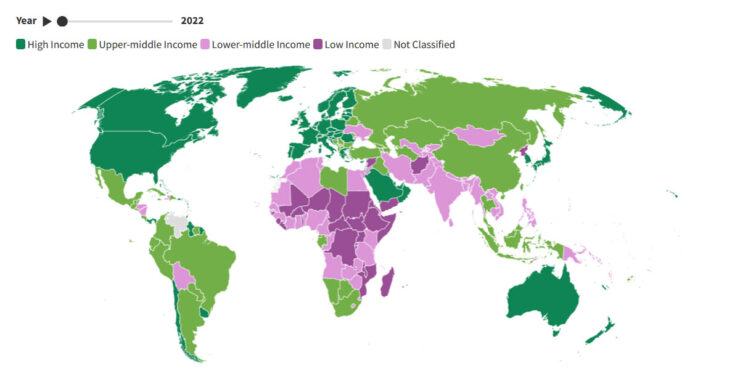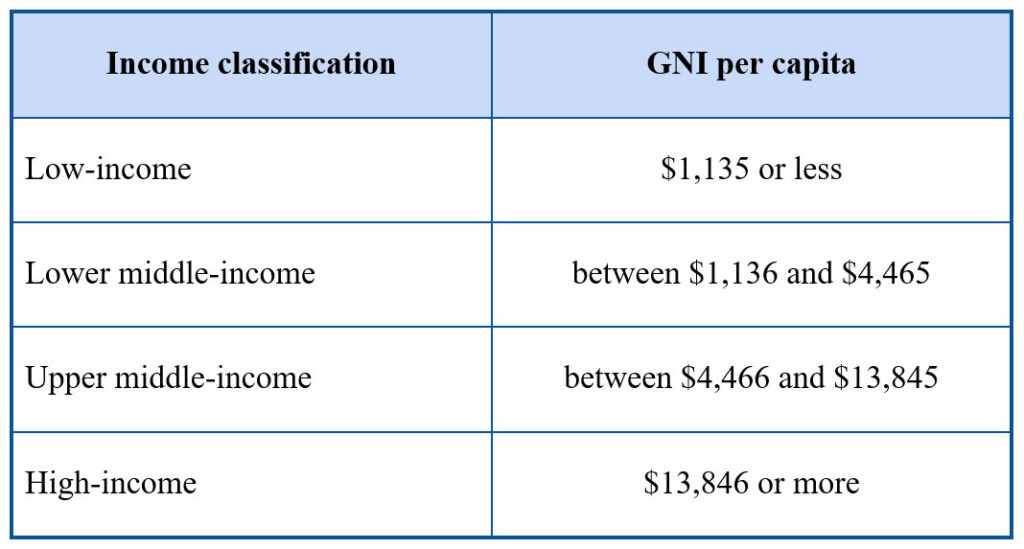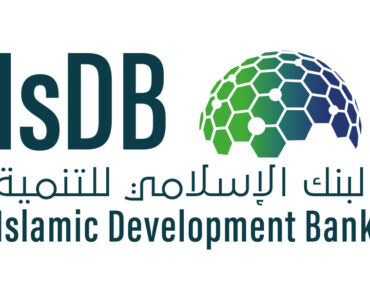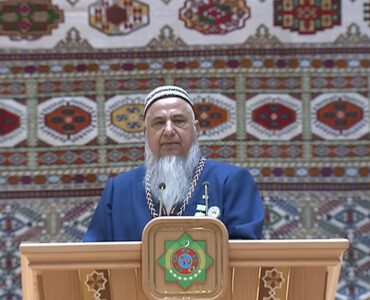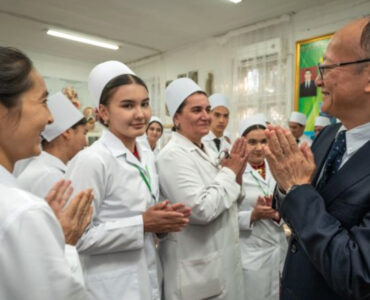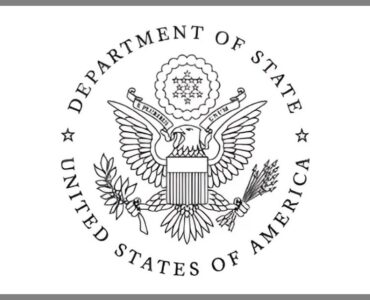Turkmenistan should be reclassified from upper-middle-income to lower-middle-income economy.
In advance of the World Bank’s country income classification update on July 1st, Progres Foundation urges the World Bank to reconsider its classification for Turkmenistan. Based on our analysis, Turkmenistan should be reclassified from upper-middle-income to lower-middle-income economy. Accurate classification is essential for developing effective domestic policies and providing targeted assistance to low-income families, especially given that the government does not set the poverty line in the country and the country is excluded from the Bank’s reports due to the lack of credible socioeconomic data. The reassessment by the World Bank would positively impact Turkmenistan’s eligibility for international aid and inform more accurate policy-making.
The World Bank’s income categories
The World Bank Group categorizes economies around the world into four income groups: low, lower-middle, upper-middle, and high income countries. The objective of the World Bank’s income classification is to depict a country’s developmental status. These classifications are updated annually on July 1st, relying on the Gross National Income (GNI) per capita from the previous calendar year. The latest classification, released on July 1, 2023, is based on estimates for the fiscal year 2022. The table below provides an overview of the income classifications and the corresponding GNI per capita required for each level.
Income classification of Turkmenistan
Since 2012, Turkmenistan has been classified as an upper-middle-income country. For cross-national comparisons, GNI estimates are converted from local currency units (LCU) to current U.S. dollars using the Atlas method. Since 2016 Turkmenistan has operated under a dual exchange rate regime with the official rate at 3.5 manat/USD and the parallel market rate fluctuating, currently at 19.6 manat/USD. The current gap between the official and black market rates is nearly sixfold. However, Turkmenistan’s GNI per capita data from 2017 to 2019 showed consistent growth, resulting in no adjustments for the exchange rate discrepancies. For example, the country’s GNI per capita per Atlas method was $7,130 in 2019, placing it in the upper-middle-income category.
However, Turkmenistan’s income classification needs to be revisited for the following reasons:
- People’s living standards are distorted due to the dual exchange rate;
- The average income in Turkmenistan is significantly lower than what the GNI per capita suggests;
- Due to a lack of reliable data of adequate quality the World Bank stopped publishing economic output, income, or growth data for Turkmenistan since 2020;
- The IMF’s study highlights how Turkmenistan overestimates the GDP growth rates;
- Turkmenistan’s Statistics Agency does not publish any economic data on income levels;
- Authorities did not publish the disaggregated results for the 2022 census;
- Turkmenistan does not have a set poverty line although the UN’s Universal Periodic Review has been calling on the government to set the line for the last 10 years.
Recalculating the GNI per capita for Turkmenistan using the dual exchange rate
The latest available Atlas GNI per capita data for Turkmenistan, from 2019, was $7,130. To mitigate exchange rate fluctuations, the Atlas method employs a three-year moving average. Between 2017 and 2019, Turkmenistan’s average black market exchange rate was 15.3 manat. In cases of dual or multiple exchange rates, the World Bank uses an average of these rates for conversion. The average of the official rate (3.5 manat) and the black-market rate (15.3 manat) was 9.4 manat in 2019. Using this exchange rate results in a GNI per capita of $2,655, placing Turkmenistan in the lower-middle-income category.
Donate to support Turkmen analysts, researchers and writers to produce factual, constructive and progressive content in their efforts to educate the public of Turkmenistan.
SUPPORT OUR WORKWe could verify this by looking at average income in Turkmenistan. According to government sources the average monthly salary in Turkmenistan was 1,569.9 manat in 2018. Assuming a 10% annual increase, the average salary in 2019 would be 1,727 manat per month or 20,724 manat per year. The Central Asia Barometer Survey in 2019 reported an average self-reported salary of 1,679 manat from over 1,406 respondents in Turkmenistan, aligning closely with government data. Using the 9.4 manat average exchange rate, this equates to $2,205 annually, significantly lower than the World Bank’s reported $7,130 GNI per capita.
What would reclassification mean for Turkmenistan
Turkmenistan should be reclassified as a lower-middle income country because it still has critical development needs to address such as widespread poverty, inequality in health and education. Reclassification would also allow Turkmenistan to qualify for more international development assistance. When international organizations provide assistance, the amount of aid and interest rate for the loan are determined according to the economic conditions of the country. For example, in April 2020, the European Union provided 134 million euros in aid to Kyrgyzstan, Tajikistan and Uzbekistan to combat the COVID-19 pandemic. However, Turkmenistan and Kazakhstan did not qualify for this aid because of their classification as upper-middle income countries.
Similarly, the Global Fund, an international organization that fights AIDS, malaria and tuberculosis, provides assistance to low- and lower-middle-income countries. Turkmenistan, as an upper middle income country, qualifies for aid only because of the high prevalence of tuberculosis. This is also reflected by the Global Fund’s decision to extend its funding to Turkmenistan from 2024 to 2027 indicating the high prevalence of tuberculosis and inability of Turkmenistan to commit and to transition to domestic funding.
Moreover, the World Bank Group has several institutions to support developing countries. For instance, as an upper-middle income country Turkmenistan qualifies to borrow from the International Bank for Reconstruction and Development (IBRD) at market-based interest rates. However, it does not qualify to borrow from the International Development Association (IDA) which offers concessional loans with very low or zero interest rates and longer repayment periods than IBRD loans. Turkmenistan also does not qualify for Official Development Assistance (ODA) since it is only available to low- and middle-income countries.
Furthermore, Turkmenistan does not qualify for Global Partnership for Education (GPE), which is the largest global fund solely dedicated to transforming education in lower-income countries. The program focuses on developing early childhood education, primary and secondary education, teacher training and gender equality in education. These are pressing issues in Turkmenistan as only 17% of children in poor households attend early childhood education compared to 77% in rich households. Similarly, out of 100 people who complete tertiary education 23 are rich, urban men while only 2 are poor women. Meanwhile, Kyrgyzstan, Tajikistan and Uzbekistan have access to favorable loans from IDA and benefit from partnerships with GPE.
Looking beyond the officially reported GNI per capita reveals much lower living standards and critical developmental needs in health and education in Turkmenistan. Therefore, reclassifying Turkmenistan as a low-middle income country would accurately reflect the current realities while also allowing Turkmenistan to receive more favorable and targeted development assistance.

